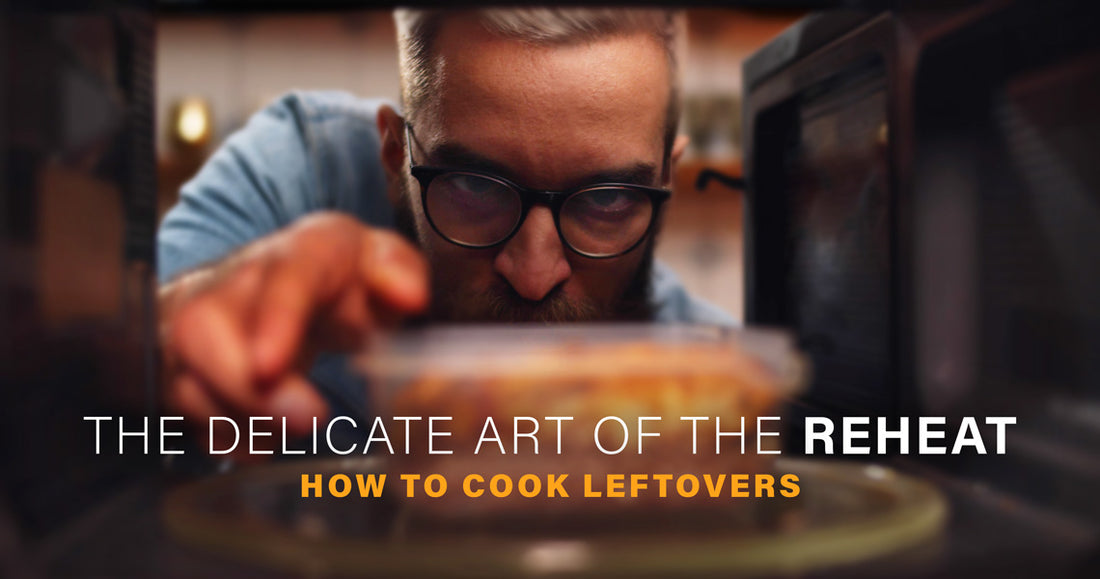Leftovers don’t always have the best reputation. Whether it’s that the flavor is compromised, the texture is questionable, or even the safety of the food is jeopardized, we’ve all seen some suspicious-looking leftovers we let sit for far too long.
But with these tips and tools, you’ll be so excited to cook your leftovers that they won’t have time to get hidden behind the milk.
Leftovers: Can They Be Just as Good the Second Time?
There are a few general rules to remember no matter what it is you’re reheating.
Do not reheat leftovers more than once. If you’re planning on eating the same meal for multiple meals, take out the portion you want to heat and return the rest to the fridge or freezer. Using a kitchen scale, such as the Primo Digital Kitchen Scale, to divvy up the portions into individual containers can save you time. Having your lunch prepped can shave minutes off your morning routine and you will also know exactly which buttons to push to heat it up.
Freeze your leftovers for up to three or four months. Any longer and you might be risking freezer burn.
Make sure to defrost frozen leftovers in the fridge or microwave before heating them. You can reheat partially defrosted leftovers in a saucepan or oven, too.
Reheated leftovers should be streaming hot throughout, and should reach and maintain 165℉ (or 70℃) for two minutes. Stir food while reheating to help it heat up thoroughly. When in doubt, it never hurts to check the internal temp of reheated meats with a digital thermometer, such as the DH1 from Escali. An ounce of prevention never hurt anyone.
What is the Correct Way to Reheat Each Type of Leftover Food?
While it’s good to remember these general rules of thumb, there are some other rules to remember for different types of food to make sure the food tastes as good as possible and is safe to eat.
For convenience, we’re going to list several different types of food you may want to reheat, and what is considered the best method of reheating that type of food.
Steak
The biggest deterrent of reheating steak is that it’s going to get dried out and rubbery. Leave the steak out of the refrigerator for ten minutes before reheating in the oven to prevent this. Oven temps can often vary so it is important to be sure you are not overheating your leftovers. Investing in an inexpensive, easy to read, oven thermometer like this one from Escali, can help you in your cooking, baking and reheating.
Oven:
- Set your oven to 250°F (120°C)
- Place steak on a wire rack inside a baking tray
- Cook for 20-30 minutes or until 100–110°F or 37–43°C in the center
- Serve with gravy or steak sauce
Chicken and Other Red Meats
This meat is best reheated using the same method in which it was cooked. Keep this in mind or write a note to yourself on the bag before you refrigerate it.
Oven:
- Set your oven to 250°F (120°C)
- Add meat to a baking tray, with oil or butter
- Cover with aluminum foil to prevent drying out
- Cook 10-15 minutes
Fish
Remember that fatter cuts of filet will retain moisture and flavor the best.
Microwave:
Best if fish isn’t breaded or battered. We don’t recommend doing this in an enclosed office space.
- Sprinkle water or oil on fish before placing in microwave
- Cover dish and heat on low to medium for 20-30 seconds at a time, checking regularly
- Flip filet regularly for even heating
Casseroles and Single-Pot Dishes
These are great for batch cooking and easy to reheat!
Microwave:
- Place food in a microwavable dish, spreading out as even as possible
- Cover with a slightly damp paper towel or sprinkle with water to prevent drying
- Heat as needed until reheated all the way through. Stir regularly for best results.
Plan Ahead to Prepare Leftovers!
Think about the foods you know tend to reheat really well or you know you love the most. If you think you might want to enjoy those leftovers for lunch the next day or even a second dinner, portion out ingredients ahead of time using a handy kitchen scale like the Nutro Digital Food Scale from Escali.
Keep an eye out for ingredients and ideas that involve leftovers, too! There are plenty of hacks and recipes that can transform your leftovers into something even better than the first go-around!

